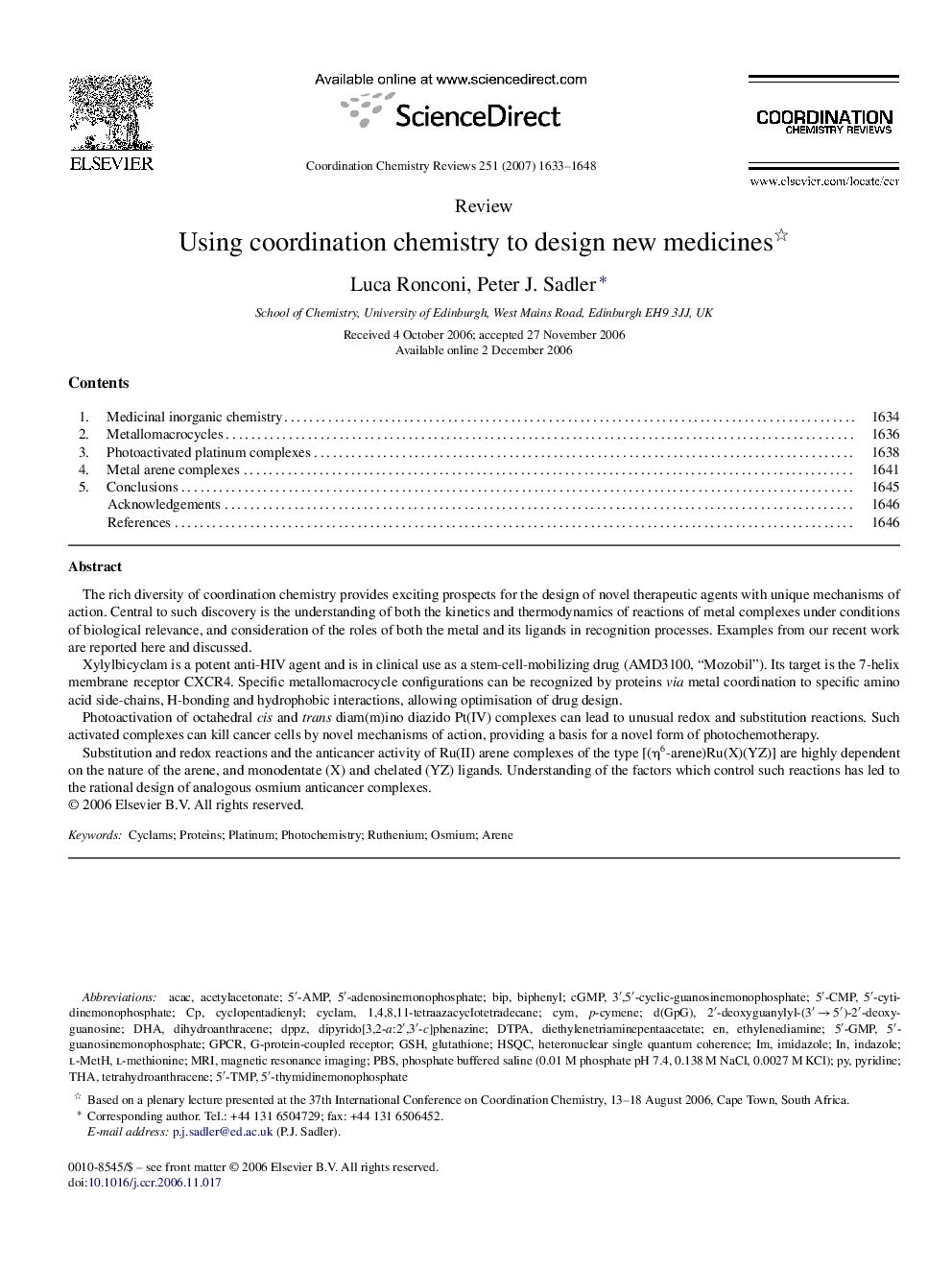| Article ID | Journal | Published Year | Pages | File Type |
|---|---|---|---|---|
| 1299975 | Coordination Chemistry Reviews | 2007 | 16 Pages |
The rich diversity of coordination chemistry provides exciting prospects for the design of novel therapeutic agents with unique mechanisms of action. Central to such discovery is the understanding of both the kinetics and thermodynamics of reactions of metal complexes under conditions of biological relevance, and consideration of the roles of both the metal and its ligands in recognition processes. Examples from our recent work are reported here and discussed.Xylylbicyclam is a potent anti-HIV agent and is in clinical use as a stem-cell-mobilizing drug (AMD3100, “Mozobil”). Its target is the 7-helix membrane receptor CXCR4. Specific metallomacrocycle configurations can be recognized by proteins via metal coordination to specific amino acid side-chains, H-bonding and hydrophobic interactions, allowing optimisation of drug design.Photoactivation of octahedral cis and trans diam(m)ino diazido Pt(IV) complexes can lead to unusual redox and substitution reactions. Such activated complexes can kill cancer cells by novel mechanisms of action, providing a basis for a novel form of photochemotherapy.Substitution and redox reactions and the anticancer activity of Ru(II) arene complexes of the type [(η6-arene)Ru(X)(YZ)] are highly dependent on the nature of the arene, and monodentate (X) and chelated (YZ) ligands. Understanding of the factors which control such reactions has led to the rational design of analogous osmium anticancer complexes.
